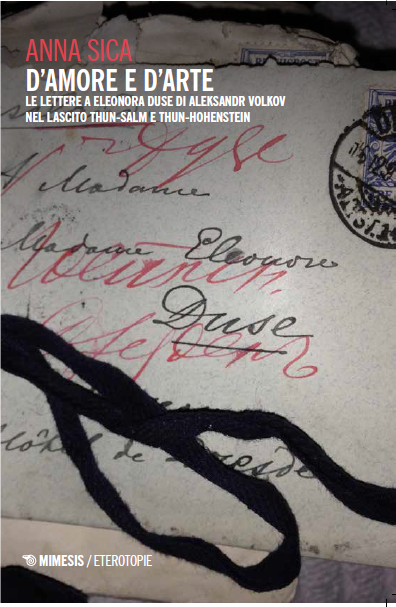
Aleksandr Volkov's letters to Eleonora Duse - almost completely neglected for more than ninety years - tell us Duse’s relationship with Volkov, i.e. between Lenor and Alex: a liaison that was fed on art and life, as well as on ordinary and extraordinary facts of history.
13/01/2021
The correspondence is composed of 303 letters, telegrams and notes written by Volkov to Duse in 1891 and 1892. We have not the letters that Lenor sent to Alex, but some fragments of them have been preserved, cited by Volkov in his letters. Moreover, some actress’s notes are still legible in the margin of some of Volkov’s letters and telegrams. If we combine them with the copious documentation on the actress which is extensively known, we can affirm this correspondence is an preciously worthy resource to individualise what Hofmannsthal considered as "the mystery of Duse’s unrepeatable art", expertly fashioned for the scene of her time. Volkov’s letters reveal to us what inspired Duse, in the crucial years of her relationship with the Russian painter, to run incisive changes later in her more mature acting. More specifically, from Volkov’s letters it clearly emerges that Duse's initiation into what we can define as a mannerist or idealistic naturalism, which has anticipated symbolism and post-classicism, is largely due to Volkov, who had a strong artistic influence on Duse, and was able to move her away from naturalistic and realist interpretations, and re-propose her within an ideal naturalism. The sum of volkovian idealism and dusian naturalism can be seen in Duse’s interpretation of So be it by Tommaso Gallarati Scotti. What remains of it is still readable in the actress’s prompt-book of the play, that can be considered as her artistic testament, like we often say, or rather the revelation of the nature of her ideological and literary commitment. Now we know that, in the role of Angela, the mother of Gallarati Scotti’s play, she depicted her own artistic identity, no longer as in art and in life, nor as in life with art, or as in art with life, but as history of her times and thoughts which she ran on stage and housed in the lines of her prompt-books.